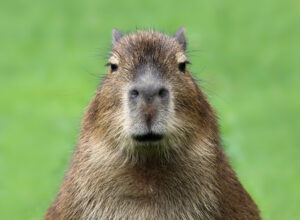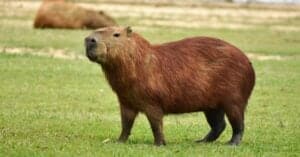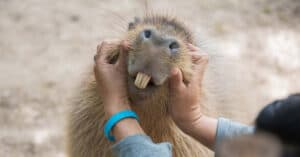The capybara is a semi-aquatic rodent belonging to the genus Hydrochoerus and the family Caviidae. Scientifically named Hydrochoerus hydrochaeris, they are commonly found in South America and have a stellar reputation for being excellent swimmers. Like most other rodents, capybaras poop a lot, and their digestive system supports it. In this article, we will be dishing out information about capybara poop including what they look like and what they are good for. Shall we?
What Does Capybara Poop Look Like?
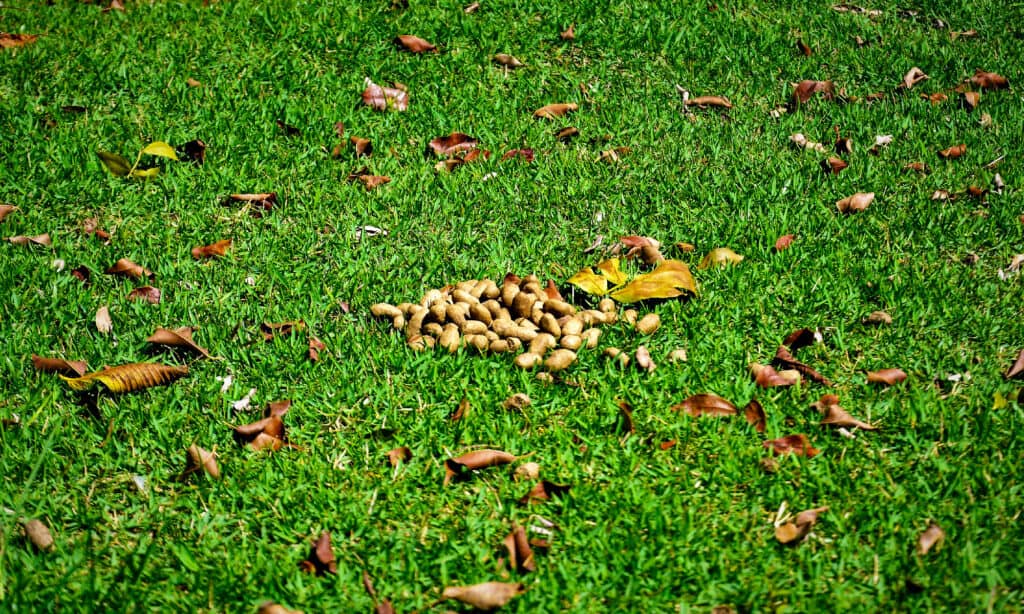
Capybara poop comes out soft and firm, and it often features several olive-shaped droppings.
©iStock.com/NancyAyumi
Like many other animals, capybaras often poop in the form of pellets, and their poop has an olive shape. It comes out soft and firm, and it often features several olive-shaped droppings, some of which appear conjoined. Capybara poop may also be black or brown; however, when it comes out in black and brown, it is unusually hard and devoid of nutrients. We must also mention that capybara poop may come out shaped like a sausage, indicating that the capybara is being fed a consistently wrong diet.
How Do Capybaras Poop?
Like most other mammals, capybaras eject poop from an opening in their hindquarters by simply lowering their butts and letting it rip. Their digestive system is exactly what you would expect a rodent’s to be; it comprises the stomach, esophagus, cecum, small intestine, colon, rectum, and of course, the anus. Once they ingest food, their digestive system processes the food, and indigestible substances are let go through the anus.
Does Capybara Poop Smell?
Capybaras generally do not stink; this is one reason humans consider having them as pets. Capybaras maintain a consistently respectable odor thanks to their wire-like fur and the absence of thick undercoats. However, their poop smells, but we wouldn’t go as far as calling it a bad or a pungent smell. Let’s say it is bearable, and that’s more than we can say for many other animals. As a matter of fact, it only begins to get very bad when there is a lot of it in a particular spot, and even then, it still wouldn’t smell as bad as dog feces.
Where Do Capybaras Poop?
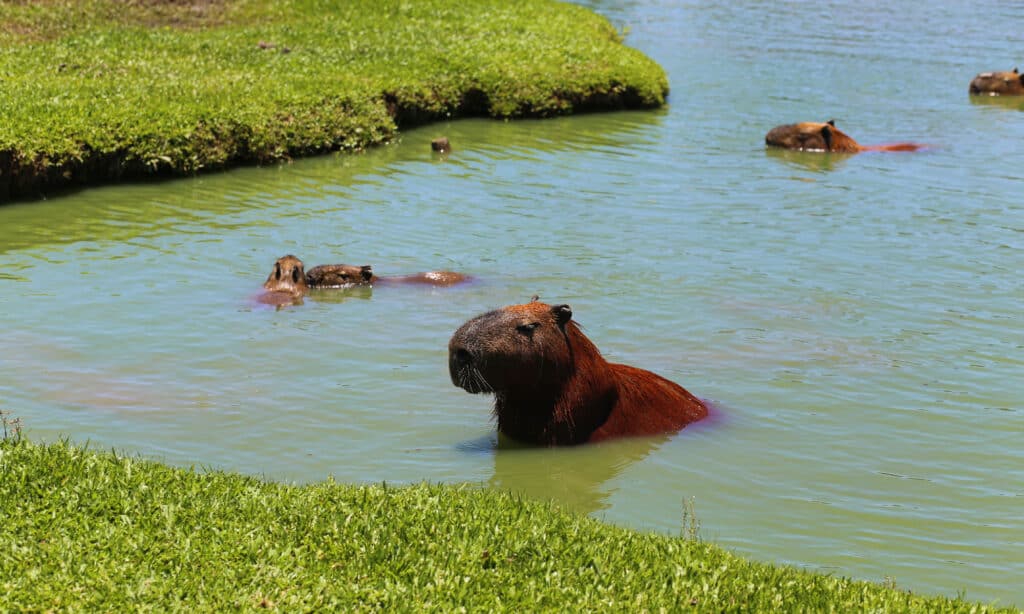
Capybaras often tap into their aquatic sides by getting into a body of water when they feel like pooping.
©mcpslima/Shutterstock.com
Capybaras are rodents who spend most of their time on land, so one would expect they like to poop on land. However, they are also semi-aquatic, and they often tap into their aquatic sides by getting into a body of water when they feel like pooping. Some experts believe they do their business in water to hide their location from predators. Pretty smart, right?
This is also good news for humans who have adopted or are looking to adopt capybaras because all they have to do is get a bowl of water for capybaras to poop in. They wouldn’t even have to do much potty training since the animal already has a natural proclivity towards the “designated water toilet.” That’s not to say capybaras always poop in the water. In the wild, they may be found pooping on grass, especially if they are in a place where they feel safe.
How Often Do Capybaras Poop?
There isn’t much information about the frequency of capybaras scat, but it is assumed that they poop multiple times a day since they eat quite a lot. That shouldn’t be much of a problem for pet owners since their poop isn’t smelly, and most of it will be done in the water anyway.
What Do Capybaras Eat?
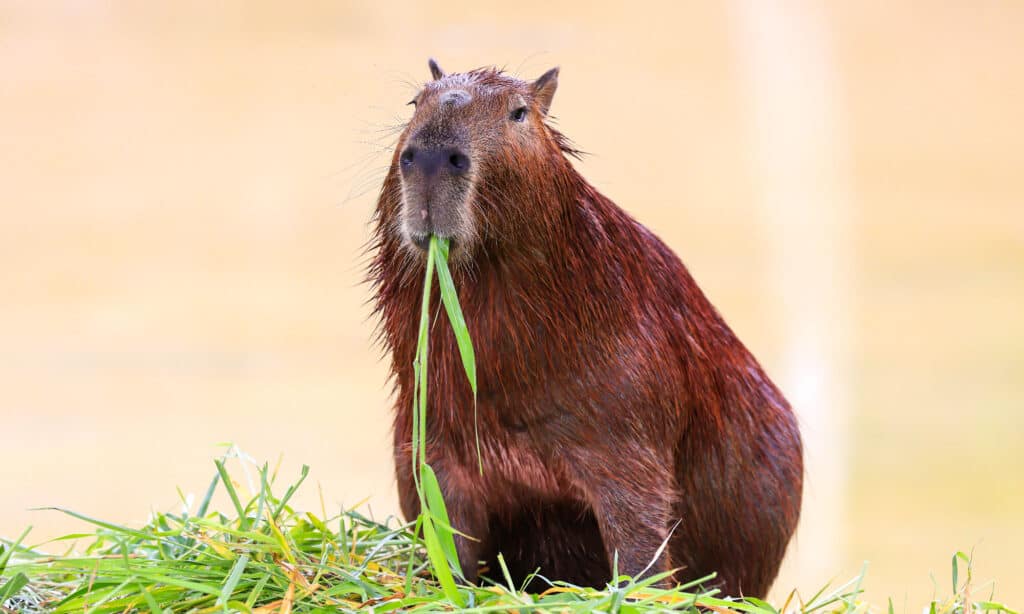
Predominantly herbivorous, capybaras mostly eat grasses and aquatic plants.
©BeautifulPicture/Shutterstock.com
Capybaras have a reputation for being the largest rodents in the world by far. They can weigh up to 150 pounds, and they stand at about 3ft tall. Pretty humongous for a rodent, huh? Well, most people wonder what they eat to get that big. Let’s get into that quickly.
Capybaras mostly eat grasses and aquatic plants, making them predominantly herbivorous. They have a constant urge to feed because of their bodies’ limited ability to store fat. On the upside, however, they have a four-chambered stomach that allows them to eat and digest plants that normally would give humans a tough time. Capybaras eat various foods, including sedges, grasses, aquatic plants, hay, bark, and reeds, among others.
A study revealed that 70% of their diet comes from sedges, Bermuda grass, crown grass, and switchgrass. Safe to say these four are their favorites. And, little wonder, their poop is mostly green-colored. Quite interestingly, they eat about 3-4% of their body weight daily, which amounts to about 6-8 pounds of food.
Do Capybaras Eat Poop?
While capybaras are not stinky, they possess a trait that most humans find disgusting- poop eating. Capybaras eat poop because their green, olive-shaped fecal waste often has high protein content, courtesy of their high amount of microbes from the previous meal. While it is true that their multi-chambered stomach helps them digest much of their ingested food, they have a chance at even more nutrients when they eat their feces. And, boy, do they take it! In more concise terms, capybaras are coprophagous animals, and their poop-eating hugely benefits them.
Do Capybaras Fart?
Much like humans, capybaras fart from time to time, courtesy of the build-up of gas in their internal digestive organs. Some scientists aptly describe it as “combustible flatulence” as it comes out short, quick, and fiery. Once they are done, they often have this mischievous look on their face as if to say, “see, what I did there?”
Just as they like pooping in water, they are also very comfortable farting in a body of water.
Is Capybara Pool Harmful?
While capybara poop is hugely beneficial to capybaras, scientific research reveals that they contain zoonotic parasites, particularly the Plagiorchis muris and the Neobalantidum coli. Studies of their stool samples in Brazil have also shown that capybaras are carriers of the emerging virus known as the Vaccinia virus(VACV).
In lieu of this, we advise thorough hand washing immediately after contact with capybaras or their poop. Also, capybaras should be kept away from in-house pools as they might take a poop there if they get the chance, and this could be dangerous for subsequent swimmers.
Up Next:
- 10 Incredible Capybara Facts
- Capybara vs Wombat: 5 Key Differences
- Do Capybaras Make Good Pets? Sweet Rodents with Special Needs
The photo featured at the top of this post is © Henner Damke/Shutterstock.com
Sources
- Research Gate, Available here: https://www.researchgate.net/publication/309383547_Molecular_evidence_of_Orthopoxvirus_DNA_in_capybara_Hydrochoerus_hydrochaeris_stool_samples
- EJ Plumbing, Available here: https://www.ejplumbing.com/blog/2021/september/4-weird-animal-poop-facts/
- National Library of Medicine, Available here: https://pubmed.ncbi.nlm.nih.gov/1954740/
Thank you for reading! Have some feedback for us? Contact the AZ Animals editorial team.



